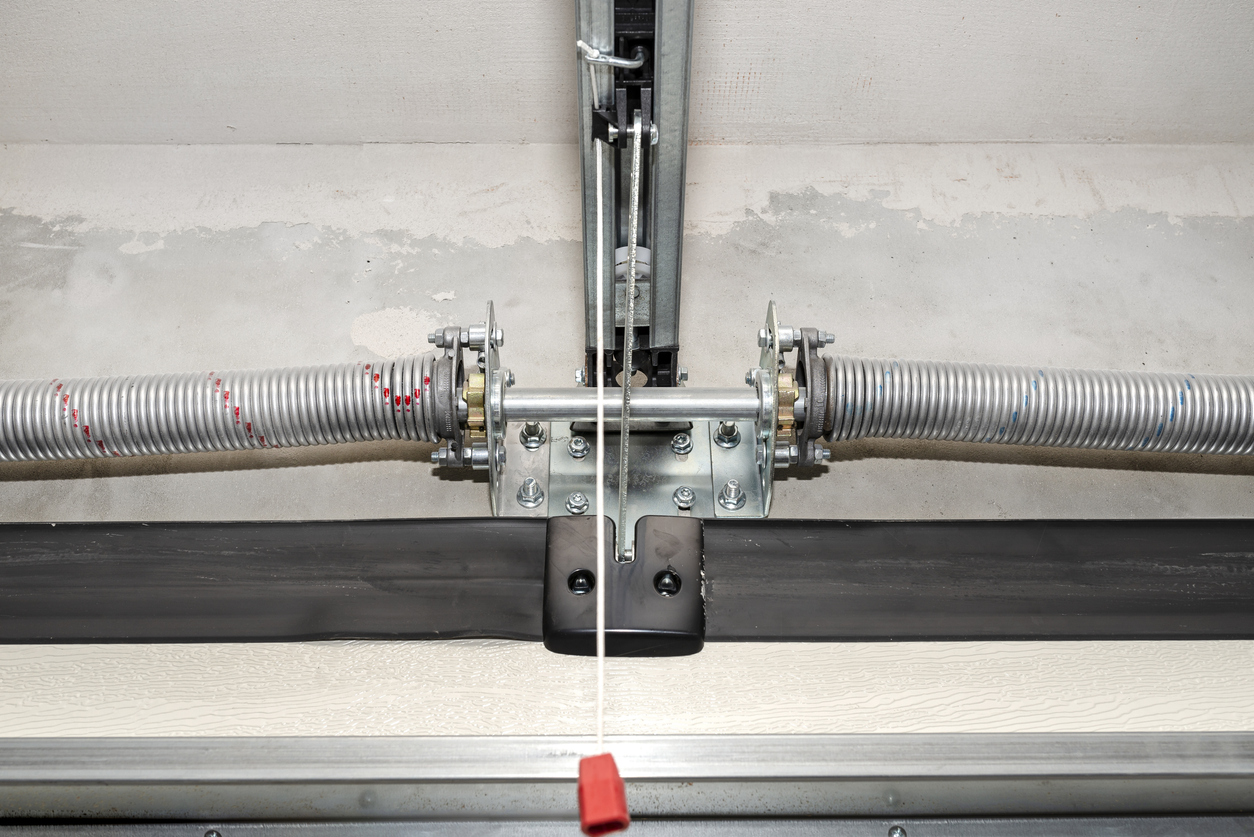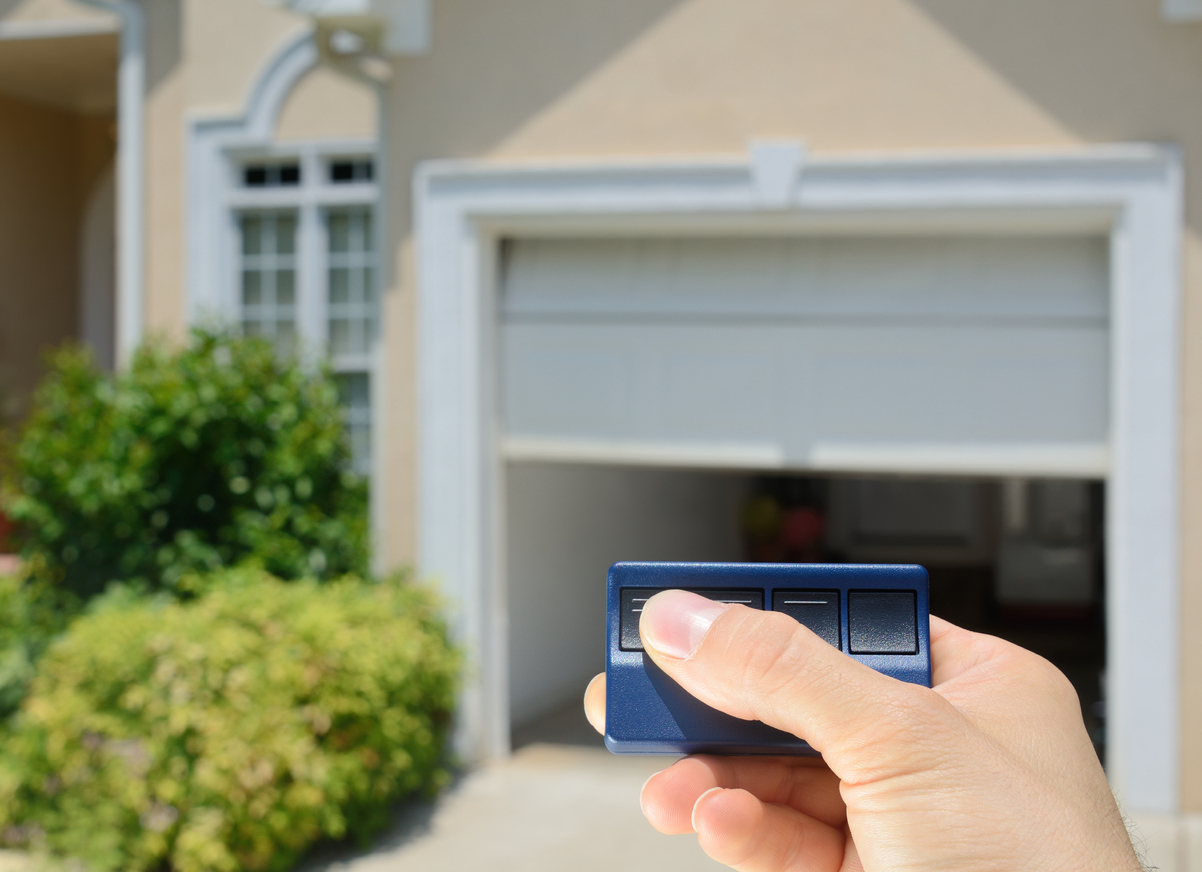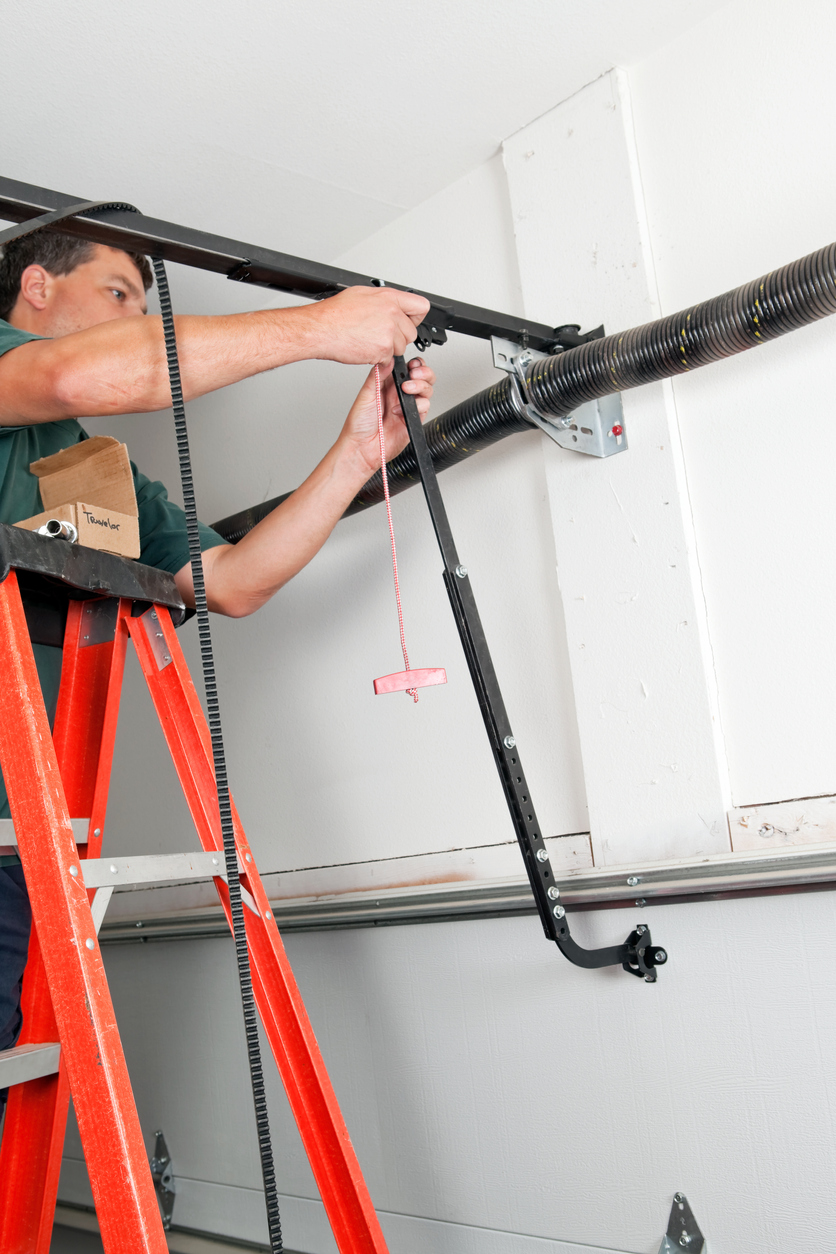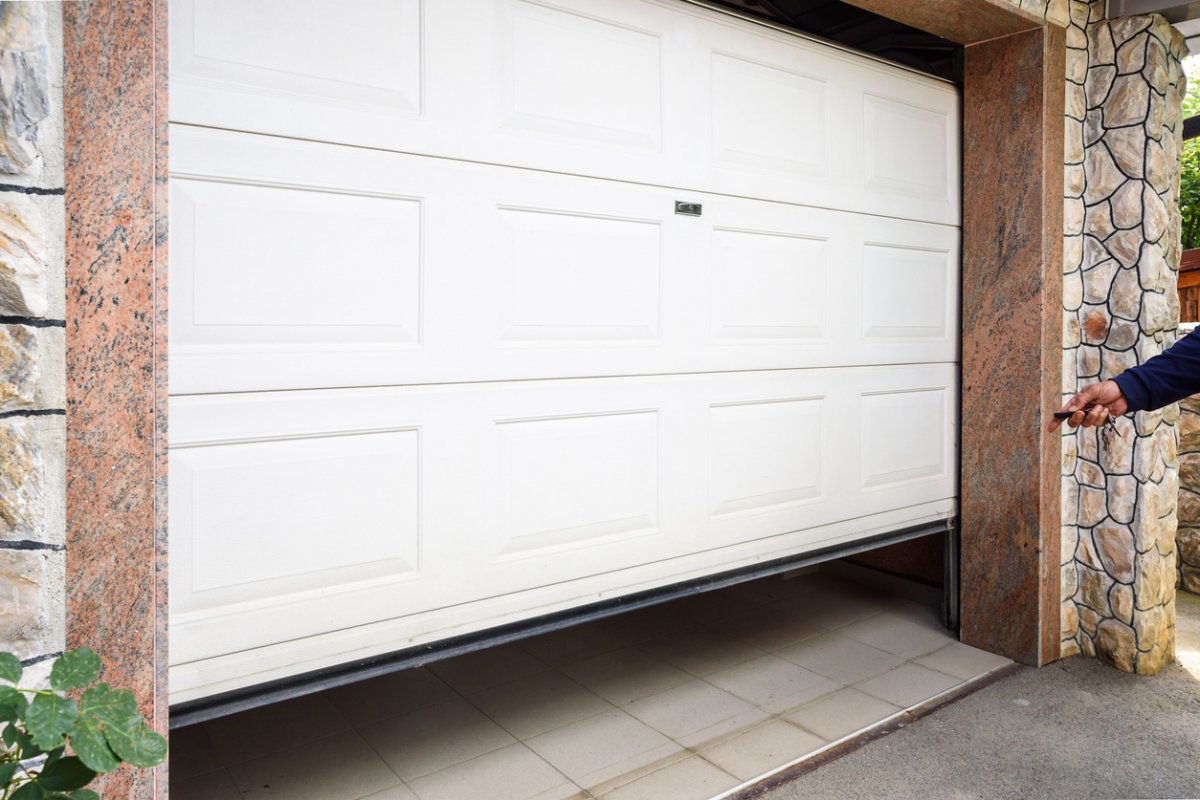We may earn revenue from the products available on this page and participate in affiliate programs. Learn More ›
Garage door opener installation might seem like an intimidating task that’s out of your reach, but today’s installation kits come with everything you need to get the job done. Given that the instructions are included and the wiring is pretty straightforward, installing a garage door opener isn’t so difficult. To make the task easier, it’s helpful to have some background on how to install them, and how they operate. Here’s what to know if you’re tackling your own garage door opener installation.
1. Garage door openers are powered by horsepower, and you need to know how much yours needs.
Before you can install (or purchase) a garage door opener, figure out how powerful it must be to lift the door. Without enough power, the garage door opener will strain each time it opens and closes the door. Lightweight doors made from aluminum and fiberglass don’t require as much power as heavier garage doors.
A garage door opener with ½ horsepower is usually enough to lift a lightweight door, such as one made of hollow faux wood, aluminum, or fiberglass, easily without straining or shortening the life of the opener. For wood, thicker metals, and heavily insulated doors, ¾ horsepower will probably be required.
2. There are three different types of garage door openers, each with its advantages and disadvantages.
Garage door openers come in three varieties, and they each have their own benefits. Knowing a bit about them will help you choose the best model for your garage door opener installation.
- Chain-driven garage door openers use gears and chains similar to those found on a bicycle to lift and lower the garage door. These models are affordable and reliable, but they tend to be quite loud.
- Belt-driven garage door openers work a lot like chain-driven models, but instead of a chain to raise and lower the door, they use rubber belts. These openers are reliable and much quieter than a chain-driven model, though they can be expensive.
- Screw-drive garage door openers install on the wall above the garage door and feature horizontal spinning rods. As the opener spins the rod, the garage door will open and close. They’re low maintenance and can be quiet if the user keeps them lubricated.
Related: Buyer’s Guide: 6 Best Garage Door Openers

3. Your garage door opener doesn’t do all of the lifting.
Garage doors often weigh more than 200 pounds, which begs the question: How does a motor with less power than a lawn mower lift this weight? The truth is that the opener shares the work with a torsion bar.
A torsion bar is a bar that installs above the door with a spring coiled around it, and its purpose is to make the door feel lighter to the person or machine opening it. It’s separate from the garage door opener, and is installed along with the garage door. The spring around the bar is adjusted so that it has just enough tension to assist someone or the opener with most of the heavy lifting while still allowing the garage door to shut easily.
Over time, the bar’s springs do fail, and the loud series of bangs they create as they unload can be terrifying to those who don’t know what is going on.

4. Familiarize yourself with the unit’s safety and WiFi-enabled features prior to installation.
Modern garage door openers come with a ton of features and gadgets. Understanding the features you’re likely to see will ensure that you’re not in the middle of a garage door opener installation and confused about the next step.
- Safety features: Most models are equipped with floor-mounted lasers that detect if a person or animal is underneath the door, and prevent it from closing.
- Remote access and WiFi integration: Some garage door openers come with remotes or keypads that allow you to open the door from the outside. Others might have WiFi-enabled features that allow you to control the door from a smartphone or tablet.
- Manual release: A manual release is a required mechanism that allows a user to open their garage door from inside the garage in the event of a power failure. Simply pulling on the release cord will open the door and allow users to get out of the garage.
- Security lights: Garage door openers feature overhead lights that illuminate a garage space when the door opens. These lights will also flash specific patterns to alert the user about mechanical errors.
Related: Automation for the Smart Home
5. Make sure you don’t need an extension kit for taller doors.
Most manufacturers design their garage door openers to work with doors up to 7 feet tall. That’s not to say that you need a special garage door opener for a taller door, but you might need a rail extension kit to make it work.
The rail extension attaches to the overhead rail on which the garage door trolley slides. With this extension installation the actual opener motor can be installed further back, allowing the opener to accommodate a taller door. Most of the time these kits also include a longer chain or belt, though additional tracks for the door’s wheels aren’t usually necessary.
6. Know when to hire a pro for help.

Garage door opener installation isn’t the most complex mechanical project, but there are times when it’s best to hire a pro. For especially large, heavy-duty doors, or extremely tall models, it might be best to hire a company that can come in with the appropriate equipment and ample manpower to get the job done.
Also, it’s best not to mess with a broken torsion spring yourself—hire a pro for this. The broken spring isn’t dangerous once it uncoils, but replacing it and putting enough tension on the new spring can be risky. This process requires a certain amount of knowledge and specific tools to ensure that the spring doesn’t slip or come loose while you’re tightening it. If it does, it can cause serious injuries.
Related: Garage Door Openers 101


